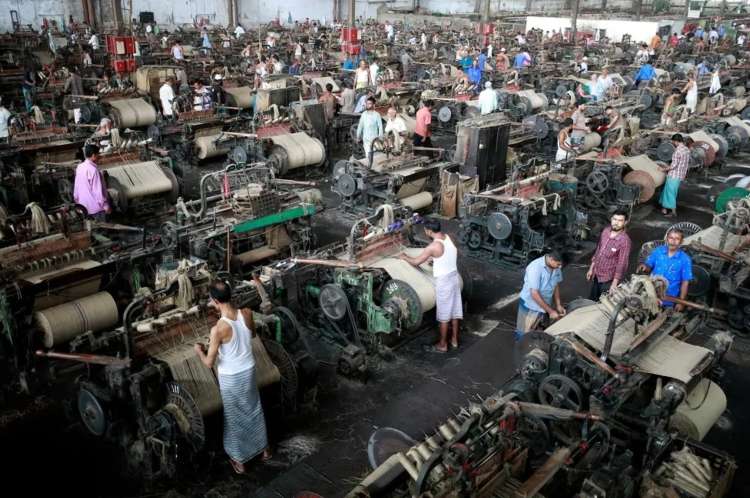
The Periodic Labour Force Survey, India’s primary source of official labour market data, has long served as a vital tool for understanding employment dynamics. But critics have repeatedly flagged its inability to reflect the true nature of India’s informal workforce, the depth of joblessness, and the chronic underreporting of women’s labour contributions. Acknowledging these gaps, the government has now embarked on an overhaul of the PLFS, in what could be a significant step toward a more accurate and responsive labour data framework.
Starting May 2025, the PLFS will be released as monthly bulletins, in addition to the existing quarterly and annual reports. This marks a critical shift in how India tracks its employment landscape—offering policymakers, researchers, and businesses more timely and granular insights into labour market conditions.
READ | Fall in manufacturing gestation time raise hopes of capex revival
A more frequent, richer dataset
Among the most notable changes is the introduction of monthly updates on key labour indicators—Labour Force Participation Rate (LFPR), Worker Population Ratio (WPR), and the Unemployment Rate—based on the Current Weekly Status (CWS) method. This replaces the earlier, less frequent rural annual and urban quarterly reporting system.
The revamped PLFS also dramatically expands its reach. The annual sample size will now cover 2,72,304 households, up from 1,02,400—a 2.65-fold increase. Furthermore, the survey has been enriched with new variables that delve into household dynamics. These include monthly household income from sources such as rent, pensions, interest, and remittances; land ownership and leasing details; and educational metrics like years of schooling, attendance rates, and vocational training certifications.
In a bid to harmonise with global standards, the PLFS will now report its annual data according to the calendar year (January–December), replacing the earlier July–June cycle. This alignment will facilitate smoother comparisons with global labour datasets, including those maintained by the International Labour Organisation.
What the April 2025 data reveals
The first monthly bulletin for April 2025 has already been released, while a quarterly bulletin covering both rural and urban areas is expected in August. The April data points to persistent challenges, particularly in urban labour markets and among women.
The overall unemployment rate for persons aged 15 and above was 5.1%—5.2% for men and 5.0% for women. Urban unemployment was significantly higher at 6.5%, compared to 4.5% in rural areas. Urban women faced a strikingly high unemployment rate of 8.7%, far exceeding the 5.8% rate for urban men. In rural areas, the unemployment gap between genders was reversed, with female unemployment at 3.9% versus 4.9% for men.
For youth aged 15–29, the overall unemployment rate was 13.8%, with urban youth facing a rate of 17.2%, compared to 12.3% for rural youth. Alarmingly, unemployment among urban young women was 23.7%, nearly 9 percentage points higher than their male counterparts (15.0%). These disparities underscore the persistent structural and social barriers limiting women’s access to meaningful employment, especially in urban India.
The LFPR stood at 55.6%, with rural participation at 58.0% and urban at 50.7%. The gender gap was stark: female LFPR was only 34.2%—a mere 25.7% in urban areas, and 38.2% in rural—compared to 77.7% for men (75.3% urban, 79.0% rural). These numbers reflect deep-rooted cultural and economic constraints that continue to marginalise women from the workforce.
Beyond numbers: Why the revamp matters
The new PLFS format holds the potential to become a gamechanger—provided it is leveraged effectively. By capturing more frequent and multidimensional data, policymakers will be better positioned to respond to short-term shocks, seasonal fluctuations, and evolving employment trends. For instance, the April bulletin has already identified key concern areas such as high urban female unemployment and low labour force participation—critical indicators that call for targeted interventions like skill development programs, urban job creation initiatives, and flexible work arrangements to bring more women into the workforce.
In addition, the inclusion of household income, land ownership, and educational attainment in the survey allows for a more holistic view of employment conditions. Data on income from pensions or remittances could inform more inclusive social security schemes, while education and training metrics can guide investments in human capital.
Reconciling conflicting data narratives
Yet, while the revamped PLFS promises improvements, concerns remain. For years, India’s employment statistics have been marred by inconsistencies between official data and estimates from private agencies like the Centre for Monitoring Indian Economy (CMIE). These differences often stem from definitional divergences. The CMIE adopts the International Labour Organisation (ILO) definition, which considers only those earning an income as employed. The PLFS, in contrast, counts individuals as employed even if they are engaged in unpaid or nominally productive activities.
This discrepancy has resulted in significant variation: PLFS estimates LFPR at 50–55%, whereas CMIE places it between 40–45%. Such differences can confuse the public and impede evidence-based policymaking. While the government has considered releasing a back series of data to aid comparisons with the pre-2025 PLFS, this alone won’t resolve the underlying inconsistencies unless definitional clarity is also addressed.
India’s labour market is complex, fragmented between the formal and informal sectors. An estimated 94% of Indian workers are employed in the unorganised sector, which lacks statutory reporting and robust data capture. This makes it all the more imperative that the official labour survey evolves to reflect the true employment landscape of the country.
Ultimately, the success of the revamped PLFS will depend on whether it can serve not just as a statistical upgrade, but as a real catalyst for informed decision-making. For that, transparency, consistency, and definitional precision will be as important as frequency and scale. Without these, the latest revamp risks being yet another token exercise in a country hungry for meaningful data on jobs.
